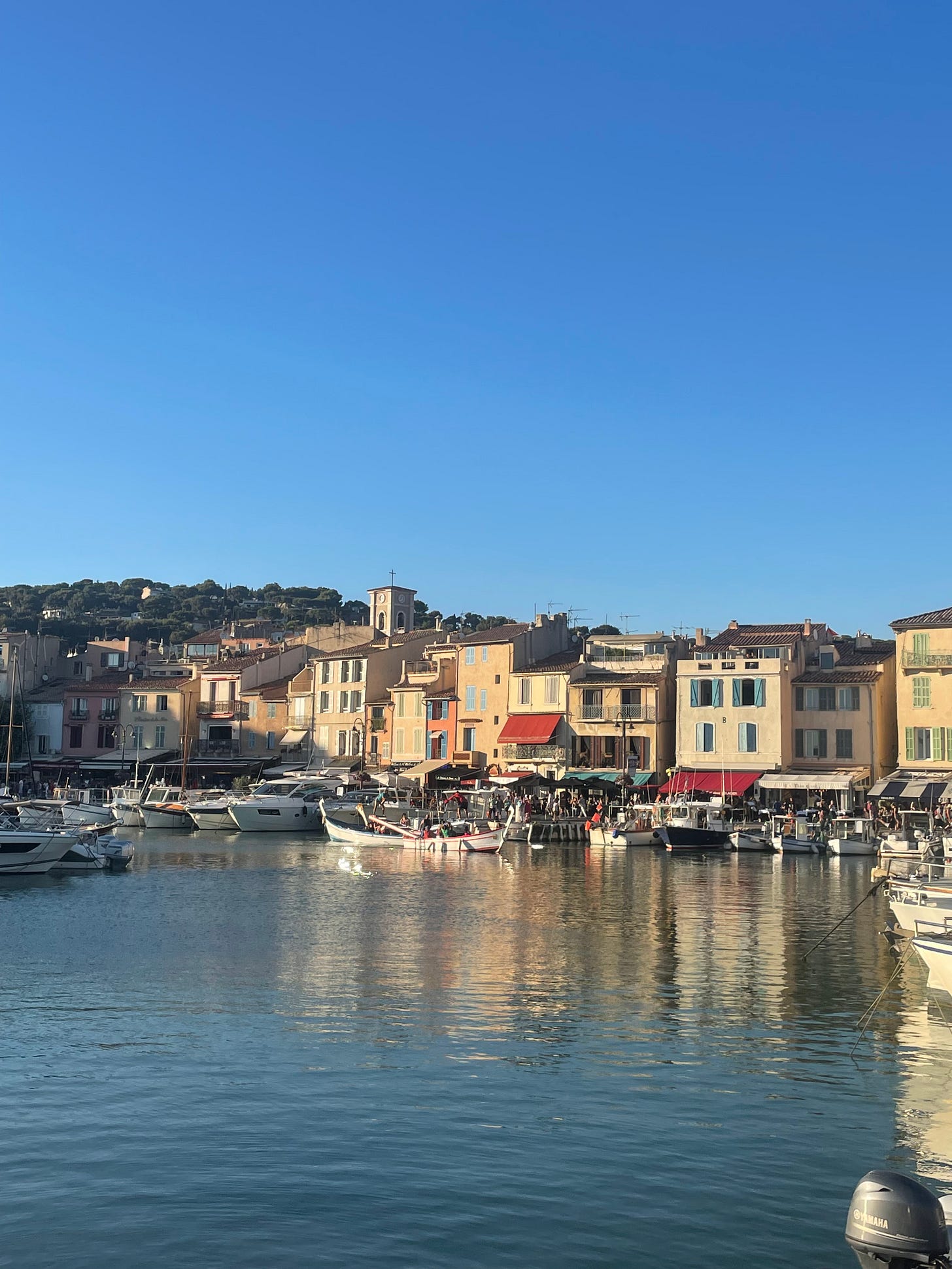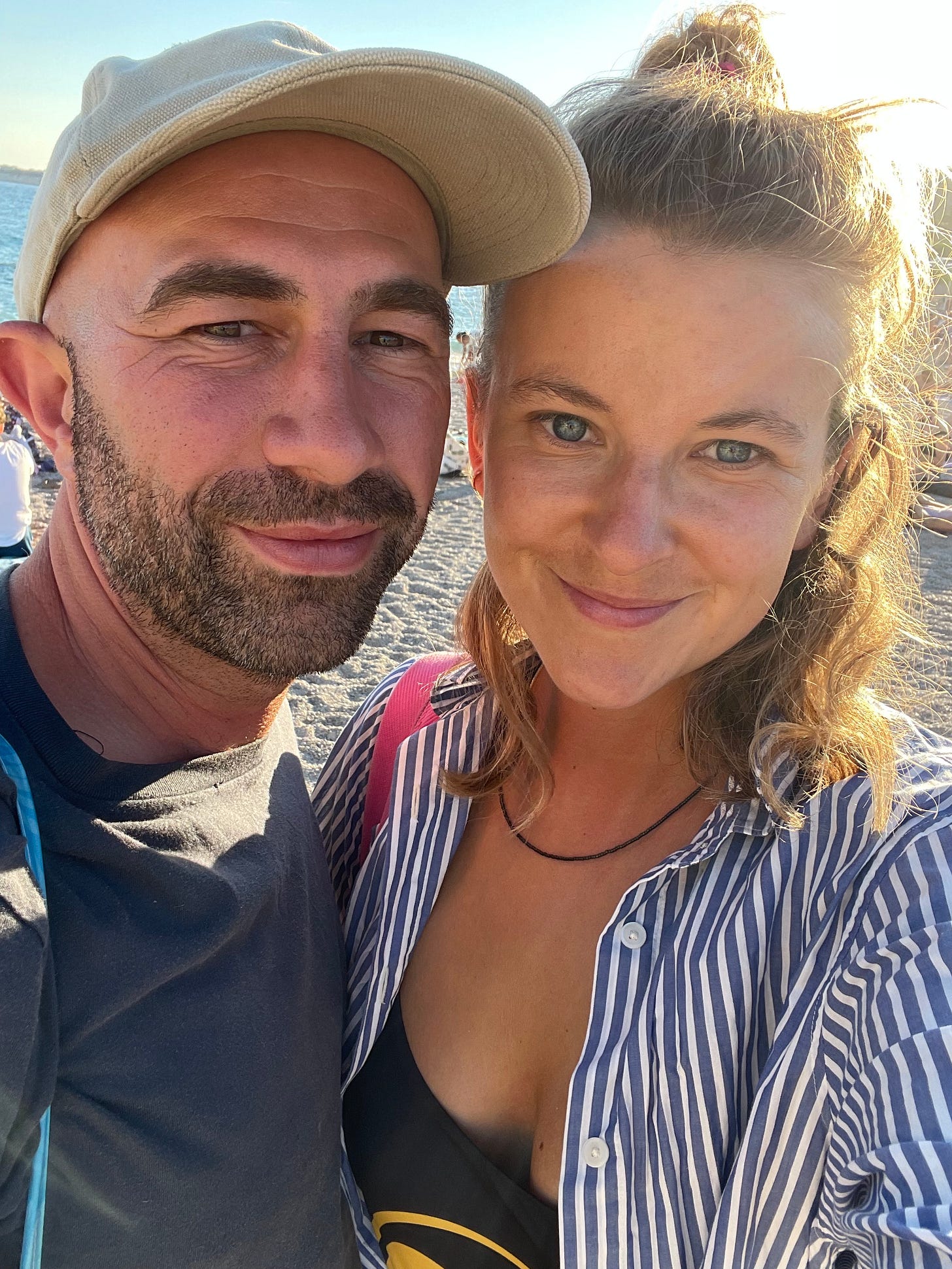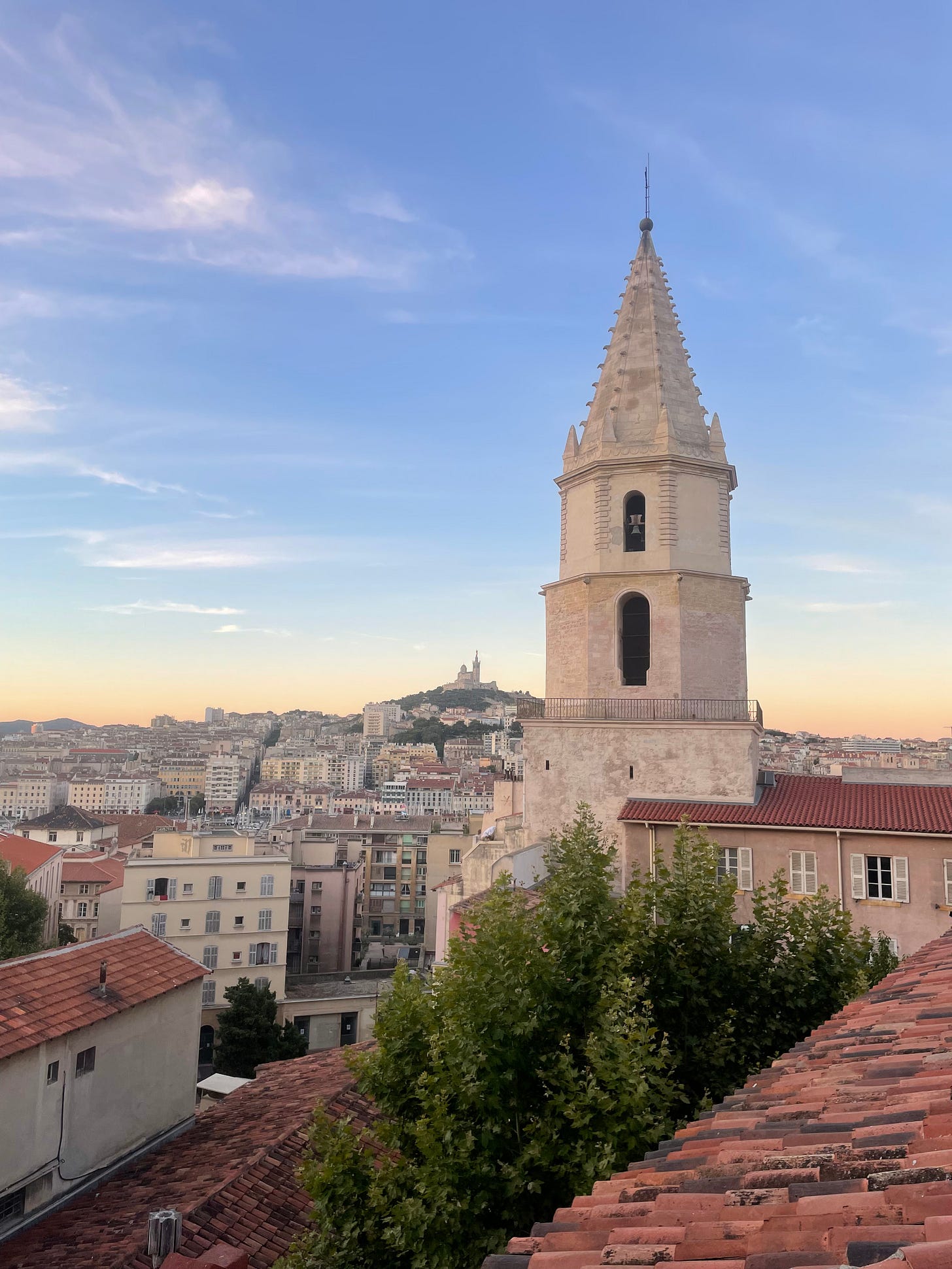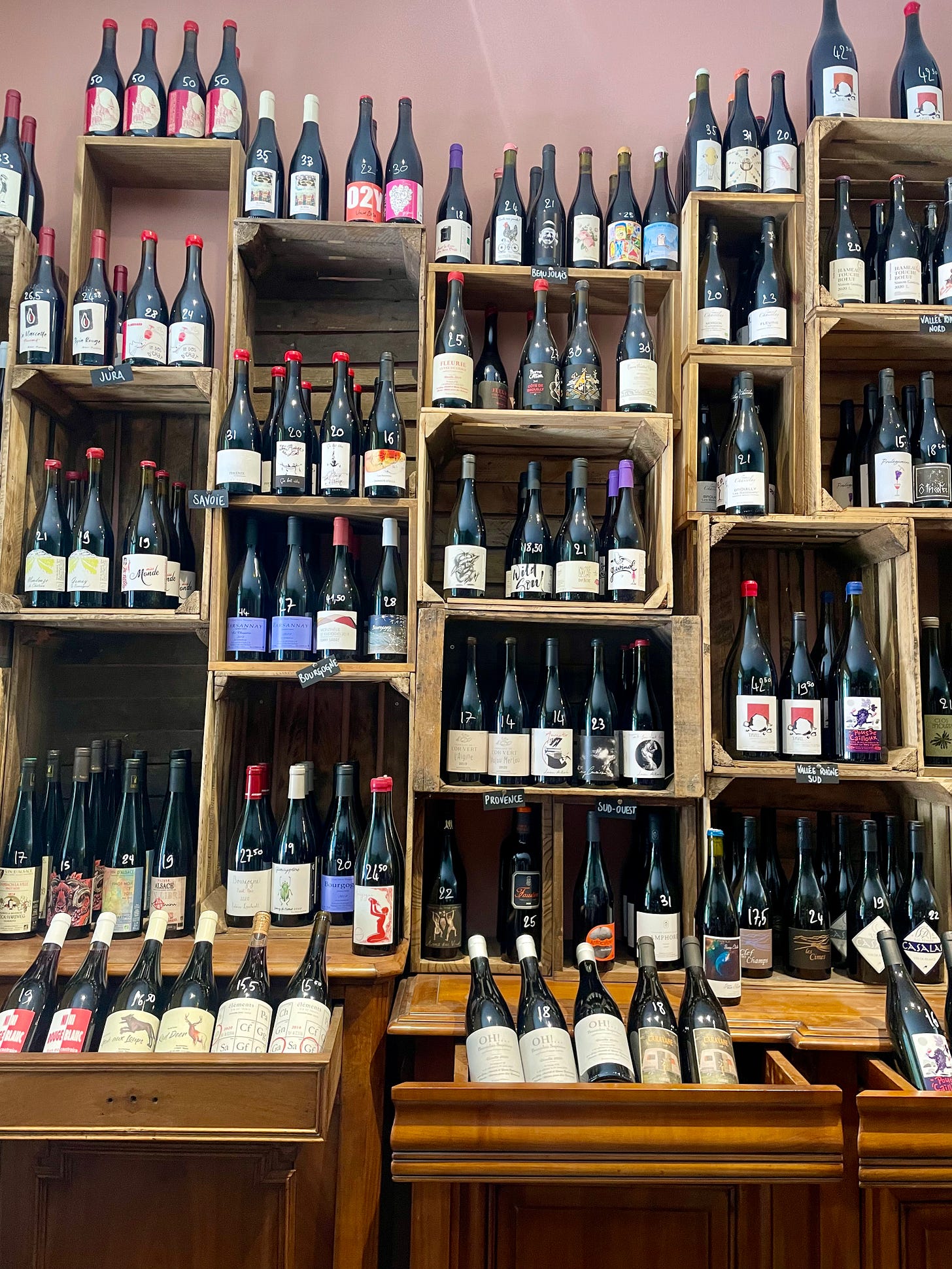We last left you as we were making our way from Tournon-sur-Rhône to Avignon.
This stretch of the journey took us through Northern Rhône, characterised by sheer-sided hills and Syrah-yielding vines, to the more expansive planes of the South, where crunchy Grenache has a stronghold.
Unbeknown to us, we arrived in Avignon during the peak of its annual festival. Think Edinburgh Fringe; walls plastered with flyers, am-dram on every street corner and plenty of improv dancing.
With only 48 hours in town, we explored the city on a surface level; skimming around the fortified town, taking in the sights at a glance then finding a quiet square for a demi.
Preferring to avoid the festival crowds, we ventured further afield for dinner on our second night to La Divigne. Honestly speaking, it was THE best meal I think we ate during our time in France. After being invited into the kitchen to meet the charming chef, Rosa Pilpel we left with full tummies and a hefty list of restaurants to visit in Marseille thanks to the lovely FOH team.
Back in Penelope, we drove onwards to Aix-en-Provence.
Believe the hype people, Aix is a true delight. It’s a lavender-scented, terracotta-hued town that’s all about “douceur de vie”. It’s known as the city of a thousand fountains, it was Cézanne’s hometown and it really does look as picturesque as it does in A Good Year.
atWe spent our time in Aix getting lost in the old town and happily imagining we were locals as we chatted to the fish monger and the eccentric baker at Farinoman Fou who told us ‘la baguette’ is a rigid and bureaucratic construct and instead, he calls his version, ‘l’effarouchée’ meaning shy. Why? We wish we could tell you but we were too caught up in the smell of freshly baked bread.
We also met up with our friends Ben and Alex who run a coffee and catering empire called MANA, at La Cave des Ours. We shared a lovely bottle of Grenache blend from Domaine du Petit Bonhomme, which really ticked a box for something delicious, vibrant and funky.
Whether it was Aix or the wine or that Friday feeling, something sparked us to lean into a fizzy frame of mind that night. We whipped up dinner at our Airbnb, opened another bottle of wine and afterwards, decided to go out on the town.
I say out on the town but really, we went to a buzzy little square where the lights were twinkling and practically everyone was smoking. Waiters were weaving their between tightly-packed tables and a busker was crooning away on a street corner. We found a spot, ordered two Aperol spritzes and soaked up that giddy pre-weekend feeling.
The next day, we woke up with slightly sore heads. But that didn’t stop us from packing our bags, grabbing a coffee, retrieving the van, checking out of our Airbnb, and all before 10am.
High-fiving each other, we bundled into Penelope and drove to our next stop, Cassis.
We had an emotional moment as we approached our next stop. It was a combination of excitement, tiredness, relief of finding a camping spot and a hint of disbelief as we realised, we’d travelled over 700 miles from the top to the bottom of France. Without a breakdown. My happy tears were also largely prompted by this song, which since watching Zootopia now gets me every time.
Cassis is a tiny port town in the middle of the Calanques National park. The front is lined by sorbet-coloured buildings with bars and restaurants that open at 8am and don’t close until late. The white-stone beach fills up quicker than you can lay your towel down but everyone happily makes do with their ruler-measure strip of sand. Just as we did.
We spent the afternoon cooling off in the sea, earwigging on all the French chat and slipping in and out of sleep. Milking every last beam of sunlight, we cracked open some beers on the beach before ordering takeaway pizzas, which we ate overlooking the sea.
The rest of our time in Cassis was dominated by the beach. We went for early morning swims when the water was inky blue and icy cold, and wandered Cassis’ passageways in search of ice cream.
After a quick beach-to-chic change we headed for dinner at Poissonnerie Laurent, where we feasted on tiny whitebait, all salty and moreishly crunchy, tomatoes that tasted of summer and a knock-out Bouillabaisse, served naturally with an outrageously garlicky rouille.
Leaving Cassis, we took a detour to Calanque de Port-Miou for a quick plunge in the sea before driving into Marseille.
Our drive into Marseille city was a challenge. Picture the scene; traffic is coming from all angles. Cars, motorbikes, vans, pedestrians who feel quite comfortable stepping into the busy road are all in the mix. Meanwhile we’re sweating through our clothes and considering ditching Penelope on the side of the road.
Eventually we found Parking Massabo.
As we pulled up, a small, grey-haired woman emerged from the office to the side of the entrance. When I say small, she was tiny; two heads shorter than me with disarming eyes and a ruthless air of authority. Immediately we knew not to mess with her.
She €90 for two nights’ parking – easily the best money we spent on our trip – we then grabbed our bags and hiked our sweaty limbs up to our Airbnb in Le Panier.
Needless to say, the panoramic view across the city made our dicey arrival feel worthwhile.
The next day, we attempted to run up the 150m peak to Notre Dame de la Garde (the church on the hill you see in the picture above). Later, we walked around the coast from the Port Vieux to Vallon des Auffes, a fishing village nestled up a creek that looked like a scene from a different time.
Other highlights from Marseille include big fountain energy at Palais Longchamp, and dinner at Livingston where the Coques with jalapeños really packed a punch, particularly paired with a couple of glasses of Assyrtiko, a native grape from Greece produced by Ariousios Winery.
Marseille is a lot of things. It’s hot, heavy, gritty and definitely not pretty. It’s boisterous, it’s in your face and it smells, bad. It’s also colourful, vibrant, beautifully weathered and it has a twinkle in its eye.
We made an early start from Marseille to avoid the inevitable rush-hour frenzy.
Next stop: a one-night stay in Montpellier where the atmosphere felt a lot calmer. We nosied around the maze of back streets, all cobble paved and teeming with cascading greenery. The city is like a living museum. It’s a hotspot for creatives and it has a young spirit owing to its university town status.
The wine
This is as much about #vanlife as it is about vins vivantes - literally, living wines.
While in the Rhône one of the producers we fell in love with was Matthieu Barret at Domaine Coulet. Based in Cornas, a region that not long ago was seen as a bit rustic and lacking finesse, it’s starting to shed that reputation.
Matthieu took over from his grandfather in 1997 at only 23 and was the first to start bottling the domaines wines (previously the grapes were sold to some of the best producers in the region, including Chapoutier and Delas). From the beginning Matthieu employed natural methods and by 2002 received bio-dynamic certification. A big part of Matthieu’s philosophy is creating green spaces around his plots to encourage a diverse ecosystem. He believes it’s beneficial for his vines to have a ‘wild environment’ rather than a ‘dessert of vines’, which he feels improves soil health a gives distinct identity to his grapes.
We shared a bottle of his Brise Cailloux at La Divigne, which was really stand out. A blend of Roussanne and Viognier the grapes are picked a little earlier to preserve freshness and acidity, but still had that lovely honey opulence you’d expect from Viognier.
Laura Aillund – one of my faves even before this trip, so finding out she was friends with Ben and Alex from MANA meant I was both incredibly jealous and even more appreciative of her wines.
An ex-somm from Aix (bit of a mouthful) in 2017 Laura moved to Luberon on the border of Southern Rhône and Provence. A really beautiful region that’s part of a national park. Instead of the usual sea of vines the region has a lot of cherry, olive and oak trees along with a large lavender production.
Having to rent her first 2 hectares Laura has now established herself in the region with a certified organic 10ha domaine. There’s a bit of a scene developing in Southern Rhône with a number of producers making a dark rose/light red glue glu style of wine, led by the likes of Eric Pfifferling, Valentin Valles and Roman Le Bars. You can feel Laura has taken influence from them, whilst still very much cutting her own path. Her wines are more serious and less glou glou, always incredibly balanced and clean.
Join us for our next leg; Montpellier to Perpignan and see all the action on @penelope_the_bongo

















